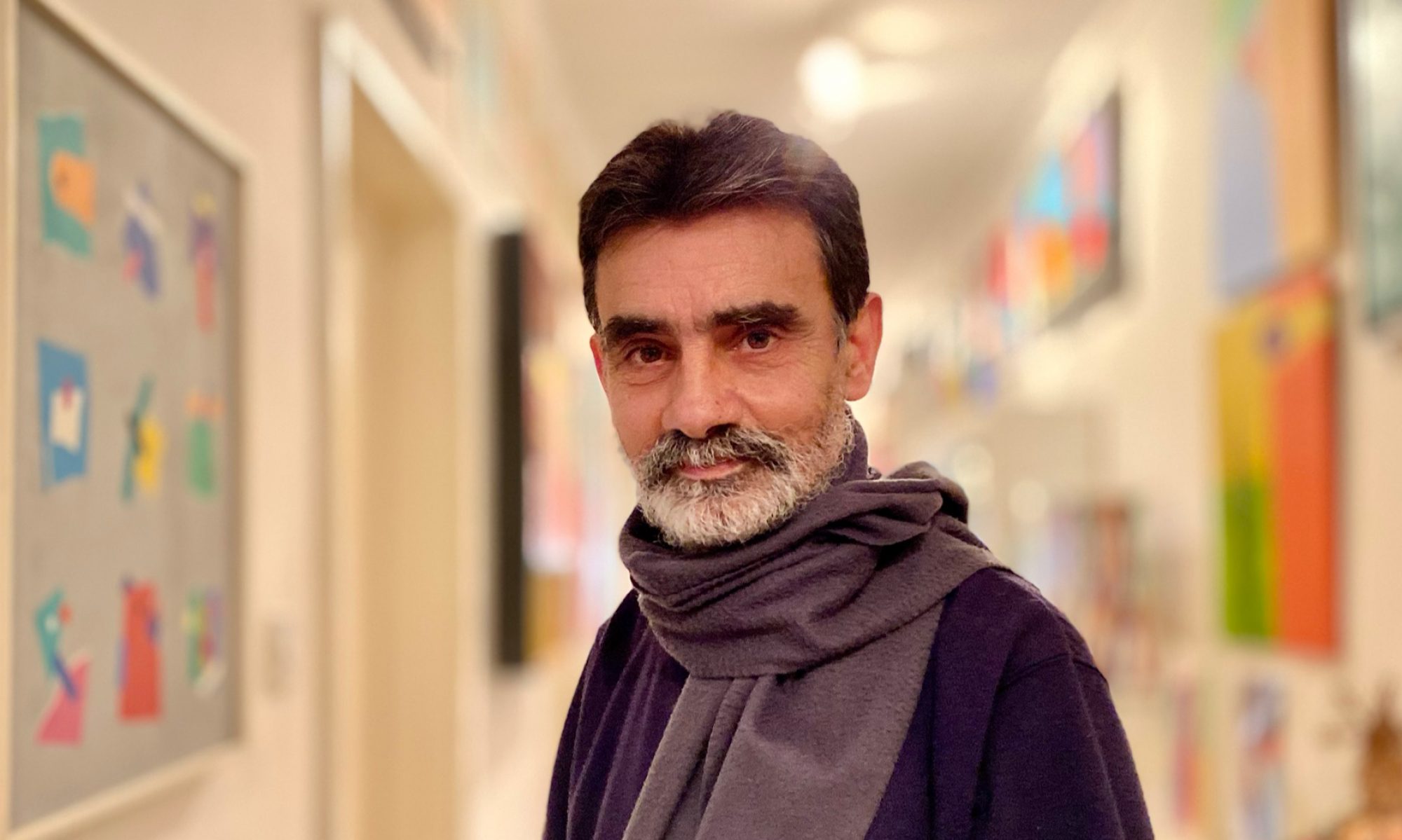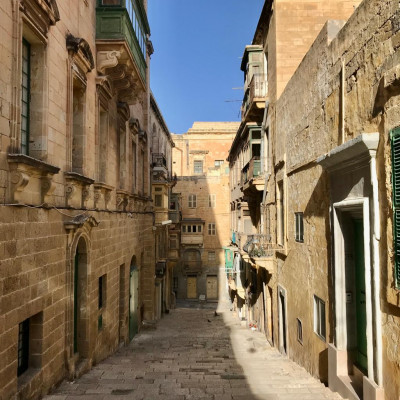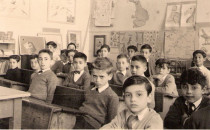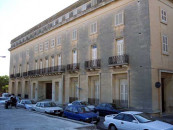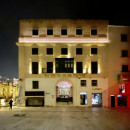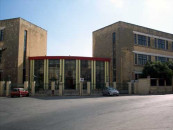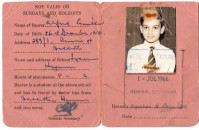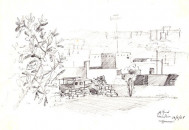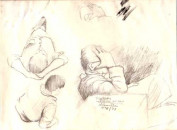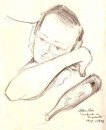I was born in Valletta on the 26th December 1950. Thus I belong to the Baby Boomer generation from the years when the world was recovering from the ravages of World War II. My late father Carlo (Charles) Camilleri who was born on the eve of WW1 in 1913 served with the Army Service Corps at the Sa Maison Bakery in Floriana.. After the war he established himself as a confectioner with his own bakery at that which was the Order’s Old Biccerija, nowadays the Valletta Design Cluster. My late mother Felicia nee Agius was a quite woman with some simple but significant good taste in the house and commanding dressmaking skills . I was the youngest of three boys, with my late eldest brother Geoffrey and Vincent.
My urge to draw was a natural aspect from a tender age. With time this urge grew consistently into a strong fervor to learn and explore the subject. I can still recall when, at the age of six, in my first year at the Government Primary School in Old Mint Street, Valletta, during the weekly art/craft session, I was asked by my teacher, the tall, fair and gentle Ms Felice, to leave my bench and assist my classmates in their task.
I felt there was a sign of relief especially from those who found it hard to build up their models in Plasticine. Such instances instilled in me a further dose of self-confidence in making art and naturally also a reasonable sense of pride.
It was also at this time that I won my first prize in a children’s art competition. It was a Rediffusion National Art contest for a picture about the Kukkanja, a traditional maltese carnival attraction. At the time ‘Il-Kukkanja’ was held at Pjazza Regina in Valletta. Competitors struggled in competition up some two-storey high pole covered with a thick net and tree branches in the form of a christmas tree. The one who would eventually manage to surpass the obstacles and reach the top will get his reward. How proud I was with my own reward, an ebony black fountain-pen with the word Rediffusion engraved on its gold clip.
Towards and throughout my teens, my deep interest in art kept growing constantly and I remember specific moments during the sixties when my curiosity and urge to learn more felt a commitment.
I still remember, at the age of ten in 1960, visiting with my family the newly inaugurated building of the Catholic Institute at Floriana. I was fascinated by the artwork and decoration which Emvin Cremona (1919-1987) and Frank Portelli (1922-2004) created for the commemoration of the 19th Centenary of St. Paul’s shipwreck. Cremona had created a stylized art and design project in his own manner from a monumental painting on glass depicting the figure of St. Paul up to the smallest detail, such as the elegant minimalist metal ashtrays, placed along the corridors. I was captivated by the atmosphere of the place with its Paleo Christian props realistically constructed from the originals.
I vividly recall, one summer Saturday morning, awed in front of Antoine Camilleri’s first experimental, richly textured and abstract attempt of a work entitled ‘Life under the Soil’ at the gallery of the then Bank of Alderney in Zachary Street, Valletta. I just loved this gallery and used to pay frequent visits until it closed down in the early seventees.
Throughout the 60s, my enthusiasm for art lessons at the Lyceum (il-Liċeo) under Antoine Camilleri (1922-2005) and later under Esprit Barthet (1919-1999) became rather obsessive. Between them, these two artists/teachers, though within a formal education, instilled in me the understanding of a fundamental discipline coupled by the pursuit of exploration and experimentation in art.
While in secondary school, whenever the curriculum offered optional studies, I subsequently and willingly retained my most favourite one. This gave me the joy of an assured award for each half-yearly and annual examination. Such school awards, together with a few others in a number of children’s art competitions, such as the Certificate for Distinction in Sculpture (masks) at the age of fourteen by the Malta Society of Arts, Manufacture and Commerce gave me great further encouragement at that age.
I was so enthusiastic about art and felt a profound sense of joy with anything that has to do with it. I remember, as a child, at our house in Valletta, occasionally propping up the dining table on its side and sticking my drawings on it in an ‘exhibition’ manner.
I still have my very first beginner’s book about painting in the Teach Yourself series. Most of all I cherish the small mahogany case which contained my first introductory oil painting set, which my father bought me from Galea’s Studio, a long established popular art supplier in Valletta. Many a time I would stop in front of the shop to watch the shop owner/artist Joseph Galea painting local scenes in watercolour. Years later, when my colour mixing palettes began to take various forms, I transformed the same wooden palette which made part of this painting set into a self-portrait in oils.
At 16 I enrolled at the Malta Government School of Art. The school was temporarily housed at that which was then the newly-established Polytechnic, in Msida, whilst today the site of the University of Malta Junior College.
The painting section under Esprit Barthet occupied the upper floor on the right wing and the sculpture/modelling class under Samuel Bugeja at ground floor. I passed my drawing test from a nude figure in plaster on my first evening at the school and was recommended to join the oil painting class on the next day.

However, I only stayed at the school for a relatively short period. One scholastic year in the painting class and that includes one week in modelling. As time passed, my great passion for making art was being marred by a feeling of discontent, a certain melancholic drag in the learning process.
While being well commended for painting still-lifes in oils and modelling faithful copies of acanthus leaves in relief, I began to realize that this was not within my studies’ expectations.
Becoming well confident with the basic disciplinary skills being practised at the school at that time, I decided to stop attending. From then onwards I vowed to commit myself to study art in my own way, freely but seriously. I felt an urgent need to explore, experiment and develop not only my skills, but also my ideas, my creativity. The only thing which I do sincerely miss from ever attending the art school is a strong portfolio of studies which I left at the school when I quit and later when I got back to it, I found out it eventually and unfortunately vanished.

In 1967, at the age of seventeen, I decided to sign a five-year apprenticeship with Malta Drydocks. I knew that for me this would prove a great personal challenge. I literally shifted my whole being from my previous academic Lyceum-type education in a rather protective environment, towards a technical one within the heaviest industrial environment on the island at the time. Rather timid and reserved in character, I consciously plunged into unprecedented experiences of danger, toil, noise, and heavy machinery. Amidst all that, art kept knocking. During breaks I used to do some sketching and this included workers at rest.
Slowly, I found myself adapting to the new circumstances. The Dockyard experience during my late teens definitely proved to be a determining exercise in life skills, as much as technical ones which by time found their way also in many a process in making my own art. The physical environment of the place would also become a source of inspiration for some of my artwork at a later stage. My early City and Guilds qualification afforded me the concession to finish my full apprenticeship in four years instead of five. Looking elsewhere in 1973, at the age of twenty-two, I left the docks to start a vocational teaching career.
